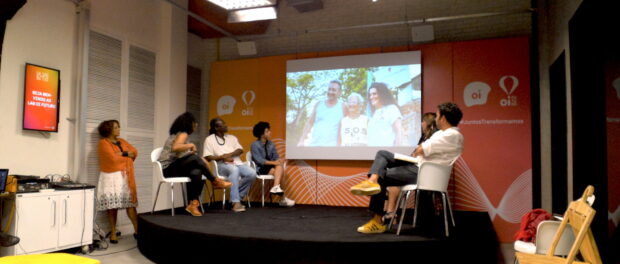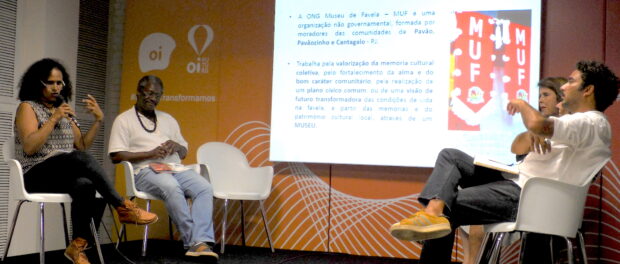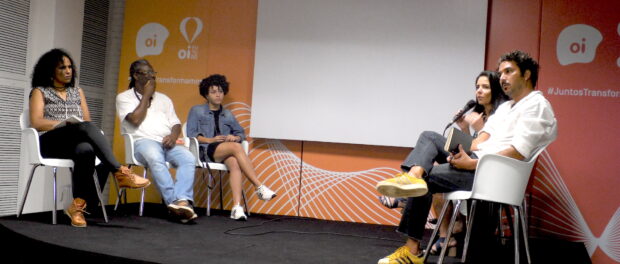
“Do museums tell our stories?” This was the central question addressed during a panel titled “Museums, Territoriality, and Representation: Let Me Tell My Story,” held on May 22 at the Oi Futuro Lab in Flamengo, in Rio’s South Zone. As part of the 17th National Museum Week, with a thematic focus on “Museums as Cultural Centers: The Future of Tradition,” the panel brought together representatives from the Rio de Janeiro State Museum Network, a branch of the State Secretariat of Culture and Creative Economies; the Favela Museum (MUF) of Cantagalo and Pavão-Pavãozinho; the Sankofa Museum in Rocinha; and the Experimental Museology Group at the Federal University of the State of Rio de Janeiro (UniRio), which works with the Evictions Museum in Vila Autódromo.
Beyond its 235 museums, the state of Rio de Janeiro contains 21 Culture Houses, three research institutes, eight memory centers, eighteen cultural centers, four memorials, and seventeen parks mapped by the State Museum Network. Superintendent Lucienne Figueiredo stated that in response to demands for training and resources, the State Museum Network hosts workshops and assists with the circulation of collections and the creation of new museums, in addition to offering support for community museums. Other participating panelists work with community museums and offered grassroots perspectives on resistance and representation.

Representatives of the Favela Museum stated that the community museum’s work is a grassroots effort to create connections between residents and local culture in Cantagalo and Pavão-Pavãozinho. By establishing MUF in 2008, they wanted to change the perspective that favelas are something negative. As such, the museum focuses on themes such as the history of the favela’s formation, the cultural origins of samba, and migration from Brazil’s Northeast. Of MUF’s sixteen founders, 13 are residents of the community, including Márcia Souza—an engineer by training who is now an “empirical museologist” with a decade of experience. Representing MUF on the panel, she said of the residents of her community: “We’re not research subjects, we’re a laboratory.” Her favorite project by MUF is the Women Warriors award, which recognizes women who keep the memory and culture of the favelas alive.
The UniRio students who work with the Evictions Museum in Vila Autódromo introduced the museum with a short video (available below in Portuguese), describing that it is a museum of resistance intended to preserve memory and that it can serve as a model for other communities facing threats of gentrification and eviction. The museum has a global reach, the latest example being organizers from Japan have been in contact with the Evictions Museum ahead of the 2020 Tokyo Olympics. Alex Venâncio, a student at UniRio, argued that all Olympic events have a gentrifying effect. He said that museum representation implies something that cannot be (or that is no longer) present. Such is the case of Vila Autódromo: the space where the community once stood remains, but the original buildings are gone. The Eviction Museum’s walking tour recognizes 21 sites of memory that mark the locations of demolished homes and local businesses.
Antônio Carlos Firmino, a resident of Rocinha, began his presentation on the Sankofa Museum by stating that cultural rights are human rights. He said that the museum’s organizers sought to avoid committing mistakes often made in the documentation of “official” history—the erasure and negation of certain aspects of history. One of Sankofa’s focuses is the promotion of mutirões—collective action events typical of favelas—in the community. He showed photos of women carrying out mutirões and stated that a great deal of work—related to the provision of water and electricity and in response to extreme weather events—is primarily carried out by women. He argued that it is important for museums to recognize the role of women in the development of favelas. The Sankofa museum documents the struggle for basic sanitation in Rocinha, as well as other events in the community’s history—from the construction of the Nossa Senhora da Boa Viagem church in the 1930s to a sheik’s visit in the 1980s.

Rio’s community museums are working towards being more accessible to everyone, including the visually impaired by collecting and sharing oral histories. Márcia Souza from the Favela Museum stated that she works with emotion: slowly but surely, with smiles and hugs, she goes door-to-door to interview residents of her community. Souza stated that MUF is currently looking for volunteers to conduct interviews, however, the museum’s activities have been recently complicated by police interventions in the community. The Sankofa museum deals with similar challenges. To enrich their historical collections with a wider variety of perspectives, Sankofa organizes “Teatime at the Museum,” inviting longtime residents to talk about different issues.
The relaxed exchange continued with refreshments after the close of the official panel. With shared recognition, much can be learned from community museums in Rio. These grassroots spaces of exchange document the history and present issues of their territories while maintaining an open dialogue within and across communities.
